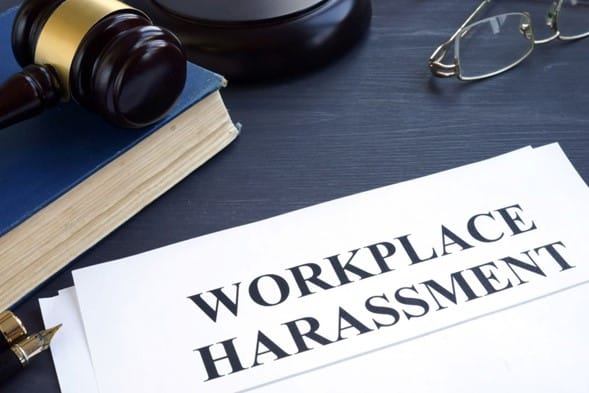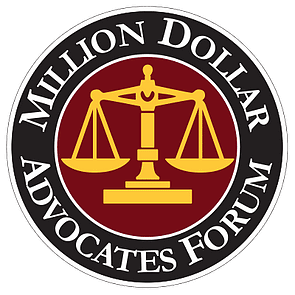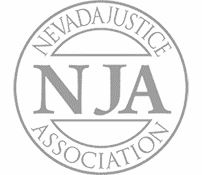Social media harassment in the workplace is becoming a serious problem amongst companies spanning the globe. Every individual has the right to a comfortable, harassment-free work environment. A hostile work environment can severely impact productivity, employee morale, and turnover rates. Social media and workplace harassment are not prejudiced; they can happen to anyone in any industry. In this post, we will cover what workplace harassment is, how common workplace harassment is and how to manage it, repercussions for workplace harassment, and the difference between a threat and harassment. It is the job of every individual in any company to put a stop to workplace harassment.
If you have been the victim of workplace harassment, you may be able to take legal action. For a free consultation, contact Adam Kutner, personal injury attorney. No fee unless we win.
GET YOUR FREE WORKERS COMPENSATION ACCIDENT CONSULTATION
NO FEES UNLESS WE WIN!
What is Workplace Harassment?
Workplace harassment includes but is not limited to unwelcome or harassing conduct based on:
- Race
- Color
- Religion
- Sex and/or sexual orientation
- Gender identity
- National origin
- Age
- Disability
- Genetics and family medical history.
Harassment can become a legal matter when tolerating the harassment becomes a condition of contingent employment or when the conduct is severe enough to create a work environment that the average person would consider intimidating, hostile, or abusive. Harassment in the workplace law protects individuals from harassment in retaliation for filing a discrimination charge, testifying, or participating in any legal action under these laws.
Workplace harassment is not:
- Petty slights
- Annoyances
- Isolated incidents (unless extremely serious)
Workplace harassment can include but is not limited to:
- Offensive jokes
- Slurs
- Name-calling
- Physical assaults
- Threats
- Sexual harassment
- Intimidation
- Ridicule or mockery
- Insults or put-downs
- Offensive objects or pictures
- Humiliation
- Interference with workplace performance
Anyone can be the perpetrator of workplace harassment. The intended victim is also not the only individual subject to workplace harassment. Anyone affected by the harassment could be considered harassed.
Is Workplace Bullying Common?

According to the 2021 WBI U.S. Workplace Bullying Survey, 48.6 million employees were bullied directly, while another 30.6 million witnessed the conduct. This study showed that 79.3 million U.S. employees were affected by workplace bullying. To say workplace bullying is common would be an understatement. It is a very real, very serious issue that needs to be addressed. Contacting a workplace harassment lawyer when these instances occur may help to discourage workplace bullying in the future.
What is the Difference Between a Threat and Harassment?
A threat is a communication between individuals in which one makes statements of intent to harm another individual, to damage another individual’s property, to restrain or physically confine, and in some cases, to commit an action that has the potential to compromise someone’s physical and/or mental health and safety.
A threat can be considered harassment. However, harassment does not always have to include a threat. Threatening an individual is considered a form of harassment.
How Does Cyberbullying Work?
Cyberbullying is bullying using technology. It can be through social media, messaging apps, gaming sites, and cell phones. The behavior is repetitive, and the intent is to scare, intimidate, shame, humiliate, etc. The technical definition is the willful and repetitive harm conducted through the use of computers, cell phones, as well as other electronic devices. Some examples of Cyberbullying include:
- Spreading lies about an individual or group
- Posting embarrassing photos or videos
- Sending hurtful, threatening, or abusive messages, images, or videos digitally
- Impersonating an individual and sending hurtful, threatening, or abusive messages to others via a fake account
Typically, Cyberbullying and in-person bullying coincide with one another. However, Cyberbullying leaves a record that can be used as evidence in a social media harassment case or assist in discontinuing the abuse.
Is it Possible to Sue for Online Harassment?
Online harassment could fall under the scope of cyberstalking. This is punishable in the state of Nevada of up to 1-5 years in prison and a fine of up to $10,000. A person can sue for damages in civil lawsuits for online harassment due to emotional stress. However, the burden of proof in these situations can be incredibly difficult to meet. Having a personal injury attorney on your side would be particularly beneficial for cases like these.
Can Adults be Arrested for Bullying?
Bullying in itself is not considered a criminal offense. However, it is not uncommon for bullying to cross the line into harassment which is a crime, and an individual can be arrested, be they adult or adolescent. It is important to understand your state’s harassment laws so you can take legal action should bullying turn into harassment.
How to Deal with Bullying and Harassment in the Workplace?

If you are being bullied or harassed at work, there are steps you can take and people who can assist you. Everyone has the right to a safe and harassment-free work environment.
- Know your workplace’s bullying and harassment policy. If your place of employment has a bullying or harassment policy, there will also be procedures to follow to formally file a complaint.
- Get in touch with support services. Dealing with workplace bullying and harassment can be intimidating and scary. Knowing you have support can be helpful in taking the proper steps to end the hostile work environment.
- Disclose the harassment to a manager or supervisor. Your place of work will likely have a process for resolving disputes.
- Be informed and seek advice. If you have followed your company’s policies and procedures, but the harassment continues, contacting an employment law attorney for advice on the next steps may benefit you.
You have the right to work in a place free of workplace harassment and Cyberbullying. It is never expected of you to tolerate these situations. You have resources at your disposal to help you properly manage these events should you need them. If you have experienced or have witnessed someone experiencing workplace harassment and/or Cyberbullying, take steps to end it. No one should ever feel unsafe or intimidated in the workplace.
For questions about workplace harassment, workers compensation, personal injury, or wrongful death, contact Adam Kutner and his experienced legal team for a free consultation.
Areas We Service in Las Vegas, Nevada
Henderson | Anthem | Summerlin | Paradise | Summerlin North | Summerlin South | Sunrise Manor | Nellis AFB | Desert Shores | Downtown South | Charleston | Richfield | Crestwood | Angel Park Ranch | Queensridge | Casa Grande Pines | Winchester |

Workers Compensation Claim Testimonial
“Adam S Kutner & Associates was a great experience and great help. My legal helped a ton, Ericka was very helpful. I’m so glad I choose Adam S Kutner & Associates for my case.”
START YOUR FREE CONSULTATION
NO FEES UNLESS WE WIN!
SE HABLA ESPAÑOL
Call Now! Free Consultation!

Adam S. Kutner
PERSONAL INJURY LAWYER
With more than 34 years of experience fighting for victims of personal injury in the Las Vegas Valley, attorney Adam S. Kutner knows his way around the Nevada court system and how to get clients their settlement promptly and trouble-free.












